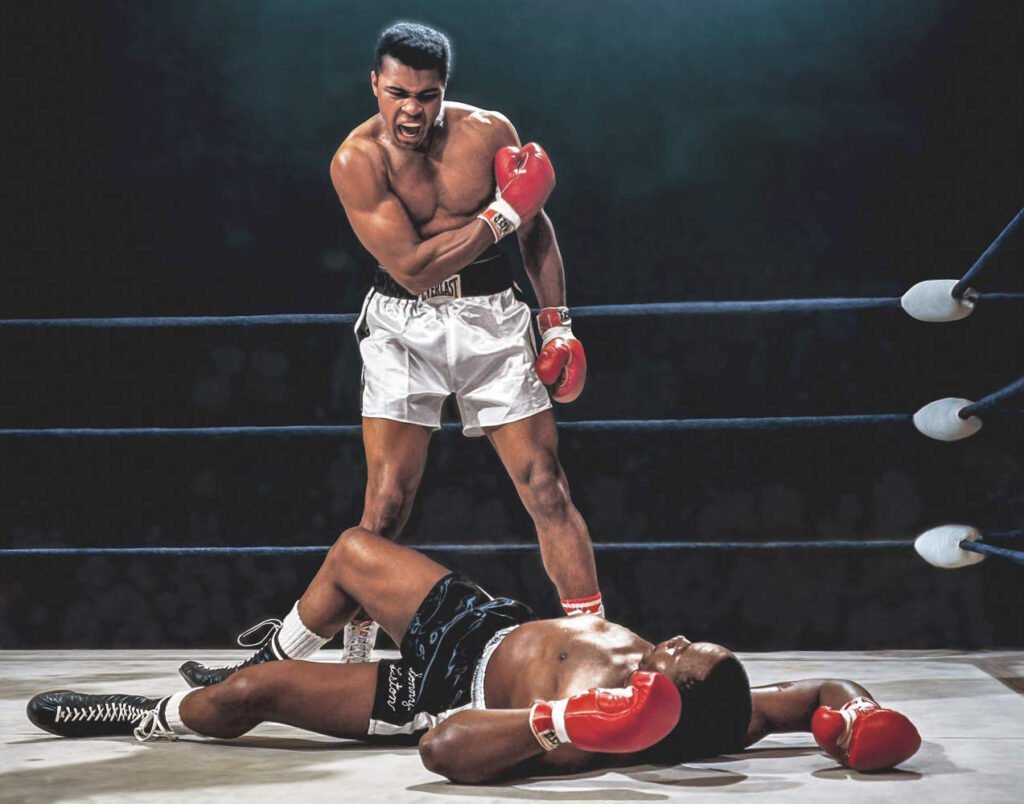When we talk about Muhammad Ali, we are talking about one of the greatest boxers in the history of the sport and an unforgettable iconic figure. Muhammad Ali was born on January 17, 1942, in Louisville, Kentucky, United States, and had a career filled with achievements and challenges.
Muhammad Ali stood out with his natural talent and ambition that drove him to succeed in the world of boxing. He began his professional career in 1960 when he won the gold medal in the heavyweight division at the Olympics. From there, Ali’s journey towards greatness began.
But Ali was not just a skilled boxer; he was also a distinctive and influential personality outside the ring. He possessed a strong, bold, and controversial character. He relied on his innovative and impactful verbal tactics to promote himself and his causes. He fearlessly and openly spoke about social justice, political issues, and racism.
Ali became famous for his unique technique in the ring, known as the “Ali Shuffle.” He moved with speed and agility, evading punches with his elusive and fluid movements. He had an exceptional ability to dodge blows and a remarkable skill in delivering powerful punches.
Among Ali’s most significant achievements in his professional career was winning the World Heavyweight Championship title three times. He achieved this through thrilling matches against formidable opponents such as Sonny Liston and George Foreman. However, the pinnacle of his career was the “Rumble in the Jungle” match in 1974, where he defeated George Foreman and won the World Heavyweight Championship.
Beyond his boxing legacy, Muhammad Ali was a symbol of strength, challenges, and determination. He inspired people to pursue their dreams and face challenges with confidence. He continues to inspire generations of boxers and athletes in general. His legacy and impact endure to this day.

Outside the ring, Muhammad Ali’s life was filled with significant events and milestones. Here are some of these key events:
- Conversion to Islam: In 1964, Muhammad Ali announced his conversion to Sunni Islam. His decision sparked wide controversy in the United States and led to a change in his name from Cassius Clay to Muhammad Ali.
- Refusal to enlist in the military: During the Vietnam War era, Muhammad Ali refused to join the U.S. military based on his religious beliefs and his conviction that the war was unjust. He had his world title stripped and faced legal consequences, but he stood firm in his stance and continued to defend his principles.
- Involvement in the Civil Rights Movement: Muhammad Ali was actively engaged in the American civil rights movement. He advocated for an end to racial discrimination and social justice. He openly spoke about issues of racism and injustice in the United States.
- Battle with Parkinson’s disease: Starting in the mid-1970s, signs of Parkinson’s disease began to appear in Muhammad Ali. Parkinson’s is a neurological disorder that affects movement and muscle coordination. Despite his declining health, he continued to pursue his activism and charitable work.
These are some of the major events in Muhammad Ali’s life outside the ring. He had a significant impact on society and the world as a whole, and he is considered an iconic figure in sports and the fight for justice and equality.
